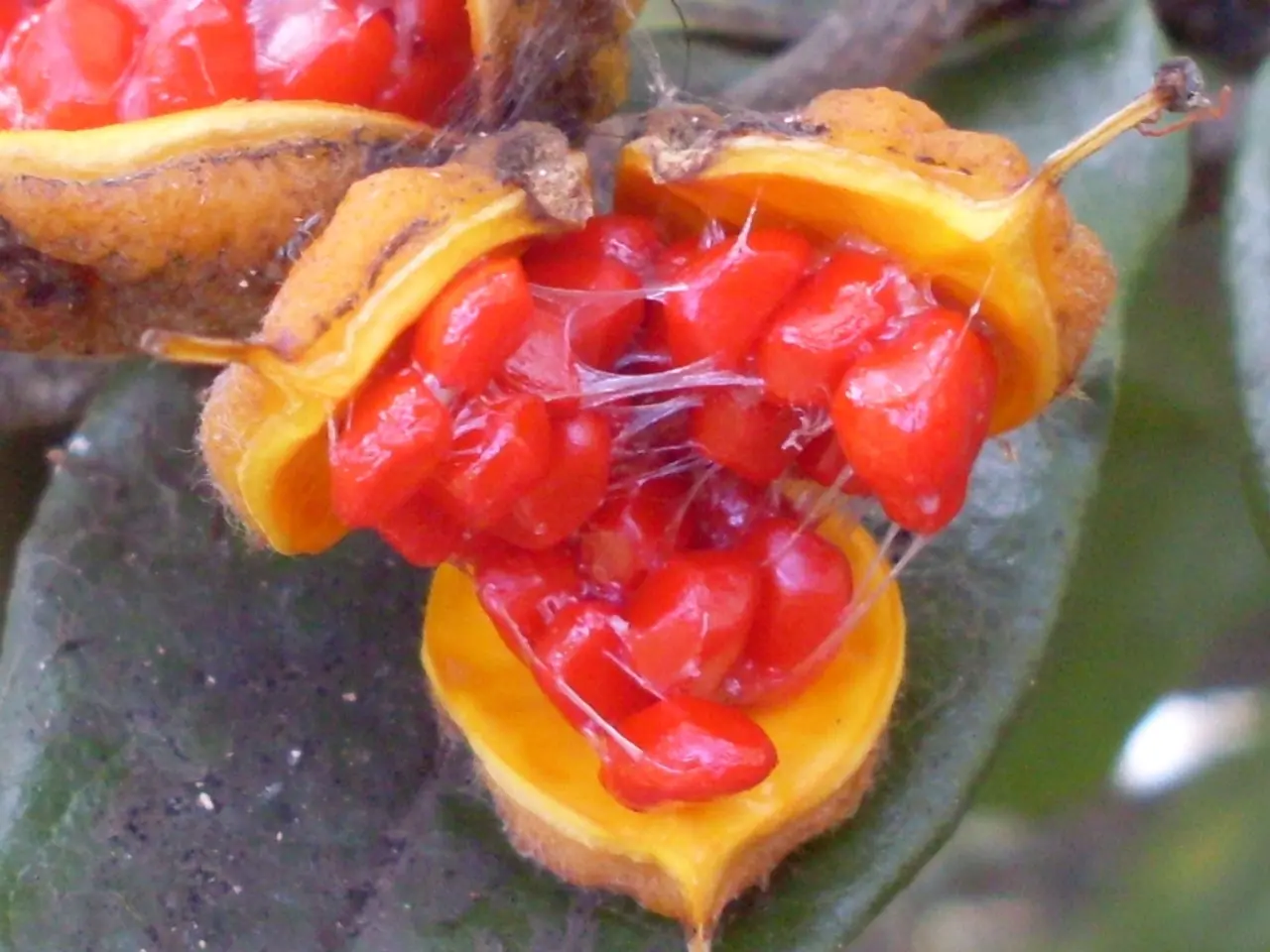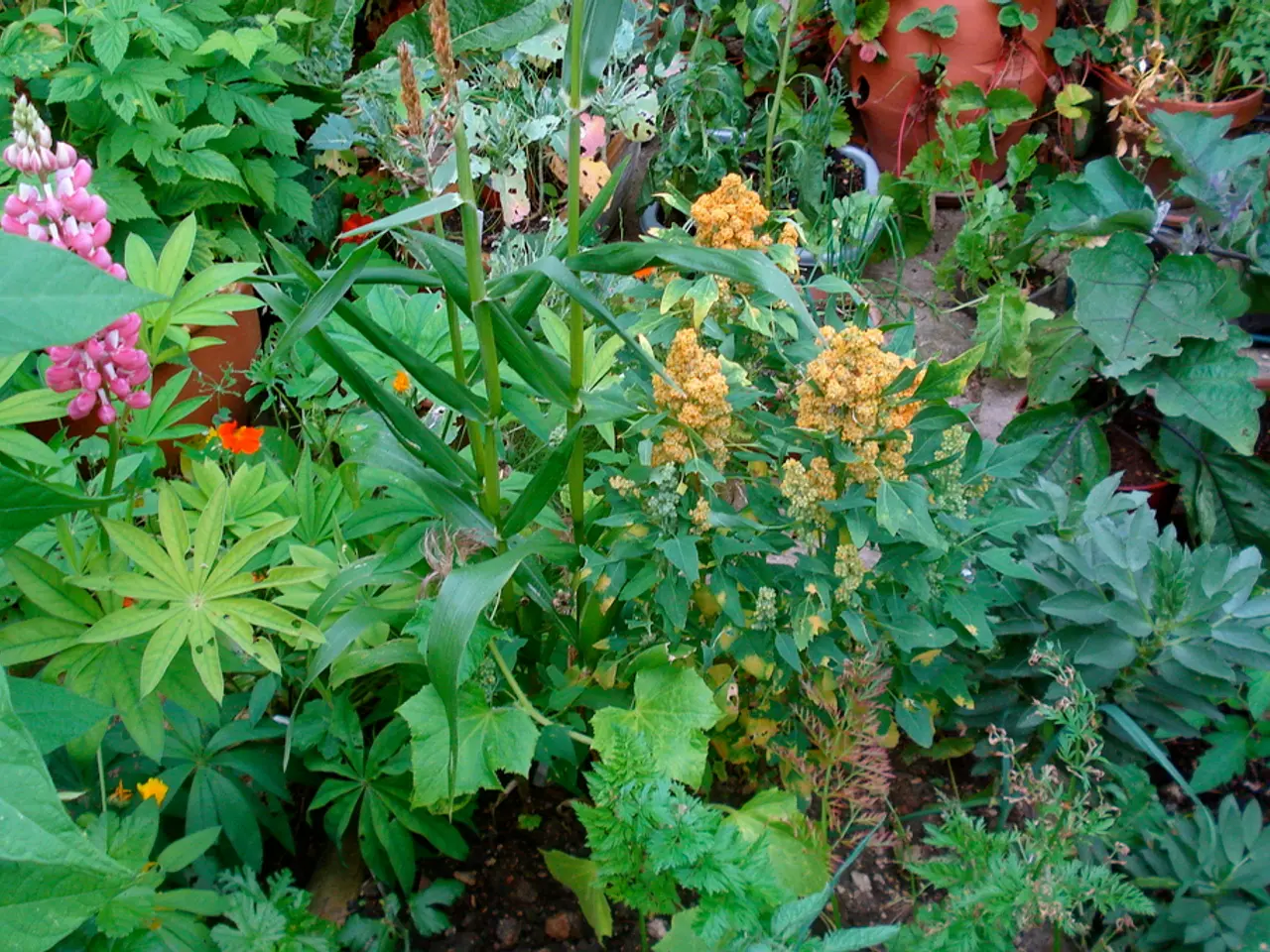Preventing water-related chaos: safeguarding garden fruits in August
In the lush gardens of Minnesota, fruit-bearing plants like apples, plums, grapes, and raspberries can face various challenges from fungal and bacterial diseases. These pathogens, specific to each plant, often cause symptoms such as leaf spots, blight, and rots.
Apples may be affected by apple scab, powdery mildew, and fire blight. Apple scab leaves dark, scabby lesions on leaves and fruit, while powdery mildew causes a white powdery growth on leaves and shoots. Fire blight, a more damaging bacterial disease, causes blackened, wilted branches and shoots.
Plums are not immune to these threats, with brown rot, black knot, and leaf spot diseases posing problems. Brown rot affects blossoms, fruit, and twigs, causing rot, while black knot forms black, rough galls on branches. Leaf spot diseases cause defoliation and weaken trees.
Grapes are susceptible to diseases such as powdery mildew, downy mildew, and black rot. Powdery mildew creates a powdery white coating on leaves and fruit, downy mildew causes yellowish spots on leaves and white downy growth on the underside, and black rot results in black lesions on leaves, shoots, and fruit.
Raspberries also face challenges, with anthracnose, botrytis fruit rot, and root rot being common issues. Anthracnose causes spots on canes and leaves leading to dieback, botrytis fruit rot causes grey mold on fruit, and root rot, caused by various fungi and nematodes, leads to plant decline.
To combat these diseases, gardeners can employ various control methods. Cultural controls include removing and destroying infected plant debris to reduce overwintering pathogens, pruning to improve air circulation and reduce humidity around plants, choosing disease-resistant varieties adapted to Minnesota's climate, and avoiding overhead watering to reduce leaf wetness duration.
Chemical controls can also be used, such as fungicides targeted to specific diseases like sulfur or specific fungicides for powdery mildew, bactericides or copper-based sprays for bacterial diseases like fire blight, and following local extension service recommendations for timing and product selection.
Environmental considerations also play a role. Some pathogens survive in plant debris, so good sanitation is key. Weather impacts disease severity: hot and wet conditions can increase fungal infections, while dry conditions reduce them.
Regular monitoring for symptoms, managing nematode populations, and avoiding stressing plants through drought or heat can further aid in disease management. Disinfecting tools between plants, removing fallen fruit and damaged leaves, and late-day watering to reduce the risk of disease are also important practices.
For precise diagnosis and control tailored to local conditions and specific cultivars, it is recommended to consult the University of Minnesota Extension resources. This article is featured under the Yard and Garden News section.
Remember, healthy fruit doesn't just happen; it's watched over by gardeners who take the time to inspect their plants regularly. If you have any questions or concerns, you can reach Robin Trott, the website educator for Douglas County, at [email protected] or 320-762-3890.
[1] University of Minnesota Extension. (n.d.). Apple Scab. Retrieved from https://extension.umn.edu/plant-diseases/apple-scab
[2] University of Minnesota Extension. (n.d.). Fire Blight. Retrieved from https://extension.umn.edu/plant-diseases/fire-blight
[3] University of Minnesota Extension. (n.d.). Grape Diseases. Retrieved from https://extension.umn.edu/fruit/grape-diseases
[4] University of Minnesota Extension. (n.d.). Raspberry Anthracnose. Retrieved from https://extension.umn.edu/plant-diseases/raspberry-anthracnose
Various home-and-garden plants such as apples, plums, grapes, and raspberries require special care to maintain a healthy and productive lifestyle in the lush gardens of Minnesota, due to the prevalence of fungal and bacterial diseases. In order to combat these diseases, gardeners can employ cultural controls like sanitation, pruning, and choosing disease-resistant varieties, as well as chemical controls such as fungicides and bactericides.




